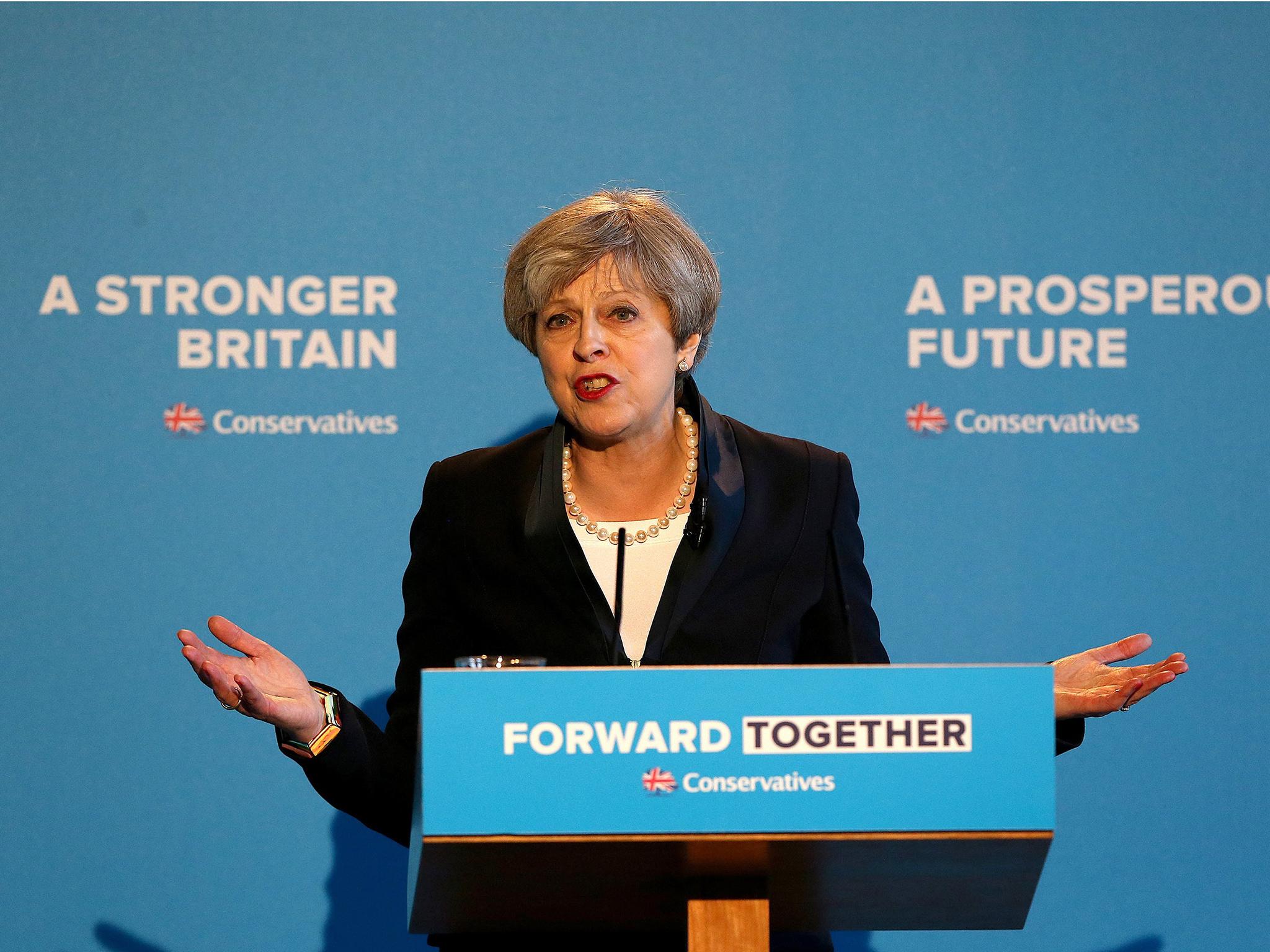Theresa May's Conservative manifesto isn't 'red' – it’s modern with a traditional streak
May is colonising the centre ground helpfully vacated by Labour while protecting her right flank by denying any oxygen to Ukip as it gasps for breath


What is Mayism? The question has bedevilled Conservative MPs and commentators alike since Theresa May became Prime Minister last July.
Today’s Tory manifesto provides the biggest clue so far, despite May insisting at its launch that “there is no Mayism”, just “solid Conservatism”.
The document draws a thick line under the Cameron-Osborne era. With a huge Commons majority in her sights, May has gone where they feared to tread, potentially upsetting natural Tory voters – better off pensioners. Out go their winter fuel allowances, and many will have to pay more towards their social care while people with assets under £100,000 will receive more state help.
Also ditched are Cameron’s triple lock under which the state pension rises by at least 2.5 per cent a year and his pledge not to raise income tax and National Insurance contributions.
To Tory traditionalists, May is a “red Tory”, dangerously following Jeremy Corbyn to the left, and the party’s most left-wing leader since the early period of Sir Edward Heath’s leadership. They don’t like her cap on energy prices, or her belief in “the good that government can do” when it means state intervention in failing markets.
But May is no left-winger. She is a Tory moderniser with a traditional streak, shown by her backward-looking attachment to grammar schools. She wants to “lead a mainstream government that delivers for mainstream Britain”, as she put it today. For her, this means colonising the centre ground helpfully vacated by Labour while protecting her right flank by denying any oxygen to Ukip as it gasps for breath. This is the only explanation for her senseless decision, against the advice of senior cabinet ministers, to stick to Cameron’s target to reduce net migration to under 100,000 a year.
Asked about her “red Tory” label, May insisted that the Conservatives had always been in the centre ground. But that was not the case in the Thatcher era. The manifesto also signals a break with Thatcherism by rejecting “selfish individualism” and “rigid dogma”. May declined to put the boot into Margaret Thatcher when questioned by journalists, but clearly she wants to be May first rather than a second Thatcher.
The promise of an extra £8bn for the NHS over five years was deliberately not trailed in advance in an attempt to get headlines. There will doubtless be an argument about whether it is all new money. But it will help to neutralise one of Labour’s attack lines: that funding per head of population was going to fall next year.
There were not many such goodies. The tone was tough but fair, a hard realism for challenging times after the Brexit vote, rather than the “sunshine” once offered by Cameron.
The social care shake-up moves the two main parties further apart on the role of the state. Corbyn’s Labour wants to increase universal provision, for example by ending university tuition fees and providing school meals for all primary pupils, while Mayism means a more targeted approach, ending the Coalition government’s school meals for all five-to-seven year-olds.
May wants to appeal to “aspiring, ordinary working class people” and, in another dig at Cameron, ensure that how far they go depends on their talent and hard work “not where they came from”. The pledges on workers’ rights and social housing put some flesh on the bones. Is this a skin-deep conversion that will be junked as soon as she has won a huge majority? Labour will claim so, and many voters may suspect it. Only time will tell.
Although she has called a Brexit election, the domestic agenda in the manifesto shows that May meant it when she said she did not want her government to be defined by leaving the European Union. Despite that, her success or failure as Prime Minister will still be determined by Brexit.

Join our commenting forum
Join thought-provoking conversations, follow other Independent readers and see their replies